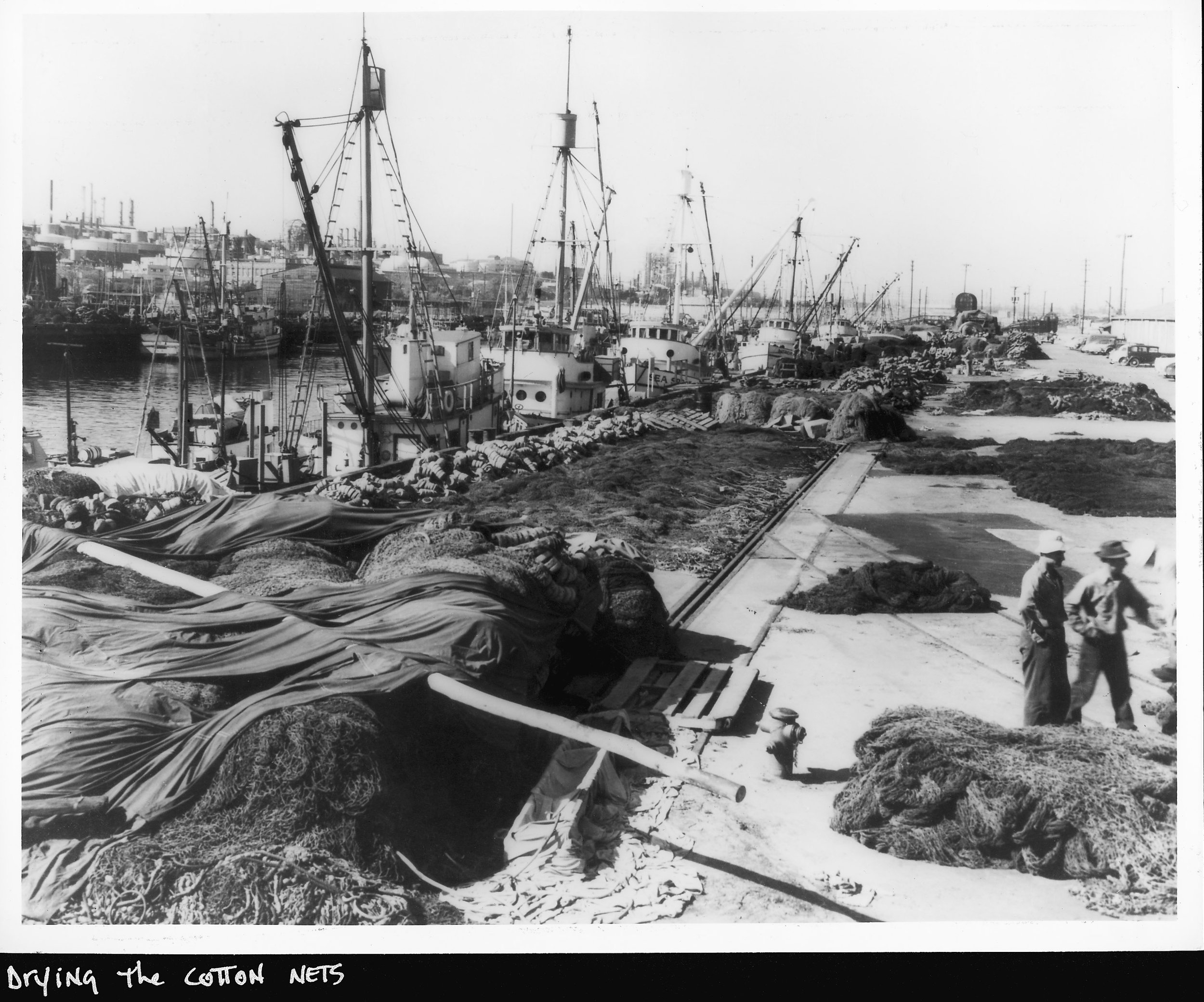
WETFISH HAVE CONTRIBUTED THE LION'S SHARE OF CALIFORNIA'S COMMERCIAL HARVEST SINCE BEFORE THE TURN OF THE 20TH CENTURY.
History
California’s market squid fishery began in 1863 in Monterey, as Chinese fishermen rowed the bay at night in sampans, carrying baskets filled with burning “fat pine” on the bow -- torches to attract the squid. In many ways the history of the sardine fishery complements that of squid. When the first sardine cannery opened in 1889 in San Francisco, the bay saw its first “haulseines”, used to take anchovies and sardines.
Another industry milestone, Frank Booth moved to Monterey in 1900, founded the F.E. Booth Company and built a plant in 1902 -- the real beginning of Monterey’s famed sardine industry.
From its beginnings, supplying needed food during World War I, California’s sardine industry grew to become the largest fishery in the western hemisphere, capitalizing on an abundance of sardines whose vast schools ranged from the Gulf of California to Southeast Alaska.
From spawning centers off Baja and southern California, a silver tide of sardines migrated north in summer. In late fall and winter the fish reversed direction, moving south. Off San Francisco and Monterey, fishing peaked in fall, and off southern California it peaked in winter, when the largest fish returned from their northerly migrations.
In the 1940s, more than 100 canneries and reduction plants from San Francisco to San Diego employed thousands of workers to process sardines, and the fishing fleet numbered 376 vessels. Then, suddenly, sardines vanished -- first from the Pacific Northwest, then from Monterey, and in the late 1950s, from southern California. The cause of the fishery’s collapse evoked great debate. Was it overfishing? Natural cycles? A combination of both?
Years later, marine biologists measuring fish scale deposits in deep ocean sediments off southern California found layers of sardine scales and layers of anchovy, with nine major sardine recoveries and subsequent collapses over a 1,700-year period. Sardines and anchovies both vary in abundance over periods of about 60 years. Cold-water oceanic cycles favor anchovies and warmwater cycles favor sardines. The average time to recover a sardine population is 30 years.
Researchers found the current sardine recovery similar to those of the past; sardines disappear periodically even without fishing pressure.
After sardines vanished, the wetfish industry turned to other fish, including anchovy and squid. Squid became the number one catch in Monterey. Squid fishing in southern California began in earnest in the 1950s and surpassed Monterey’s harvest after the 1982-83 El Nino. From the beginning, in fact, California’s round-haul fleets fished on a diversity of species, depending on area, fishing gear (lampara net or purse seine), markets and seasons.
Purse seiners also caught “whitefish” -- yellowtail, barracuda and white seabass. These they sold to the fresh fish markets, affectionately (or not so affectionately) known as “The Forty Thieves.” Then as now, the markets were an integral part of San Pedro’s fishing community; they provided an alternative to the canneries and, in most years, a decent living for the purse seine fleet.
In 1928 the first large-scale canning of mackerel began. With the development of the mackerel canning industry, the mackerel catch skyrocketed, exceeded only by sardines. By 1937 a total of 16 canneries packed mackerel in southern California, and the total number of boats harvesting mackerel had increased to 477.
As the fleet evolved, so did fishing gear and techniques -- Brine refrigeration was introduced in the 1930s... In 1954 nylon net replaced the cumbersome old-style cotton nets...Power blocks were introduced around the same time. The development of the purse seine liberated the fleet to search for fish far offshore -- and some fishermen built “super seiners” to fish specifically for tuna in the tropical Pacific.
The U.S. Pacific tuna fleet based in southern California developed to legendary proportions through decades of enterprise. At its peak, California’s tuna fishery involved more than 2,000 fishermen, whose catch provided work for 10,000 or more additional employees in canneries, boat building and repair facilities. In the post World War II era, San Diego was called the tuna capital of the world.
But beginning in the 1980s, the large tuna canners began leaving California. The last tuna cannery closed its doors in 2001. Sardines and mackerel disappeared in the 1940s due to natural forces, coupled with heavy fishing. Forty years later, the last of California’s tuna canning industry disappeared from California, driven out by politics -- and the high cost of operating in the Golden State.
The California wetfish story continues in The Industry Today






